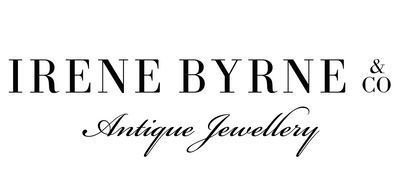Circa: 1895
Design Period: Late Victorian
Jeweller: Duggin Shappere & Co. of Melbourne
Gemstones: Sapphire and Diamond
Cut: Round Sapphires and Old Cut Diamonds
Carat: 14 Diamonds = 0.35ct
Stone Measurements: 7 Sapphires: 3.90, 3.20 and 2.55 mm
Metal: 15ct Yellow Gold
Inner Diameter of Bangle: 59.00 x 50.00 mm
Accompanied by an independent Ian Abeshouse Valuation
Duggin Shappere & Co of Melbourne
Duggin Shappere & Co. of Melbourne occupies a notable place in the story of Australian jewellery, combining technical skill, inventive design and an early commitment to local gemstone use. Established in 1896 by partners Harry Duggin and Percy Shappere, the firm quickly earned a reputation for high quality workmanship and distinctive pieces that reflected an emerging national aesthetic.
Working at the turn of the century, an era when Australia was asserting its cultural identity, the company became particularly associated with settings that showcased Australian gems, most notably opals and locally sourced diamonds, which helped their pieces appeal to both domestic and international markets. Harry Duggin emerged as a creative force within the partnership. His designs often drew on native fauna and flora, translating Australiana motifs into wearable art.
Among the firm’s better known models were whimsical yet finely executed animal themed pieces such as the “O’possum” and the “Kookaburra,” which combined naturalistic detail with the refined finishes expected of top tier manufacturing jewellers. These designs demonstrated a sensitivity to form and texture and an ability to balance charm with the restraint favoured by refined clientele.
Duggin Shappere’s hallmark, an anchor stamp, signified the maker’s pride in their production and was used alongside the guarantee marks of the Manufacturing Jeweller’s Association of Victoria, an assurance of quality that collectors and buyers looked for.
The business began in Howey Place off Little Collins Street and, after several relocations, established more permanent premises at 343 Little Collins Street, continuing active trade there until 1932. The company’s work found audiences beyond Melbourne. Duggin Shappere & Co. exhibited at major jewellery shows and attracted coverage in magazines and newspapers both in Australia and overseas, reflecting their dual identity as skilled artisans and shrewd promoters of Australian gem and design traditions.
Like many enterprises of the period, however, the firm was affected by the economic upheavals of the late 1920s. Records show that from 1929 the firm ceased to appear in manufacturing jewellers’ directories, a casualty of the Great Depression.
Today Duggin Shappere & Co. pieces are sought after by collectors interested in late Victorian and Edwardian Australian jewellery, valued not only for their craftsmanship and materials, but as early and expressive examples of an Australian design language in precious metal and stone.

